Translate this page into:
Phosphaturic mesenchymal tumour: A rare tumour & its diagnostic dilemma
*For correspondence: adityagmck@gmail.com
-
Received: ,
This is an open access journal, and articles are distributed under the terms of the Creative Commons Attribution-NonCommercial-ShareAlike 4.0 License, which allows others to remix, tweak, and build upon the work non-commercially, as long as appropriate credit is given and the new creations are licensed under the identical terms.
This article was originally published by Wolters Kluwer - Medknow and was migrated to Scientific Scholar after the change of Publisher.
A 32 yr old male† presented to the department of Orthopaedics, Seth G.S. Medical College, Mumbai, India, in July 2019, complaining generalized arthralgia, weakness and difficulty in walking (Fig. 1) for the past five years and was diagnosed as a case of phosphaturic mesenchymal tumour (PMT) of the proximal fibula with severe osteomalacia and elevated fibroblast growth factor (FGF)-23 (Figs 2 and 3). Surgical excision of the right proximal fibula was planned and carried out along with calcium, phosphate and vitamin D supplementation (Figs 4-6). Post-surgery, the patient's phosphate and FGF-23 levels returned to normal and his symptoms largely resolved at seven months of follow up.
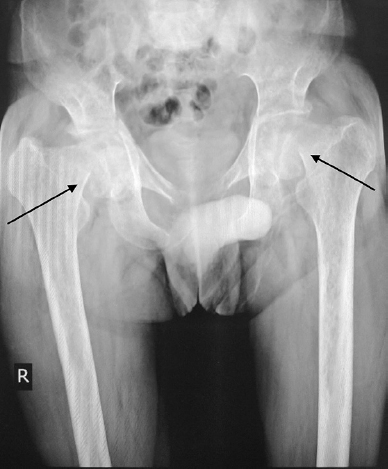
- Bilateral malunited subcapital neck femur fractures (arrows) and coxa vara deformity.
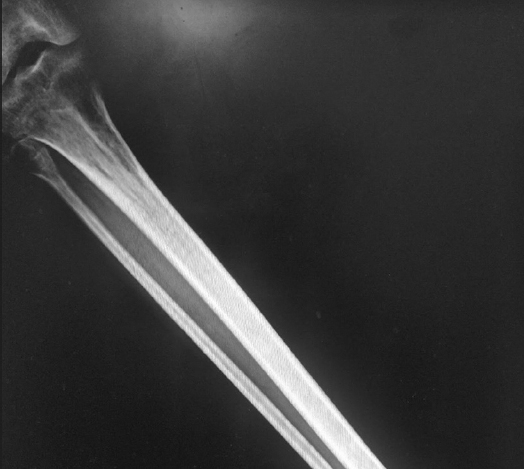
- A seemingly normal radiograph of the knee joint and tibia anteroposterior view.
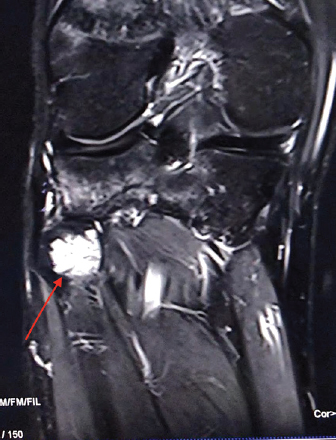
- STIR magnetic resonance imaging coronal image with a hyperintense signal intensity in the right proximal fibula (arrow).
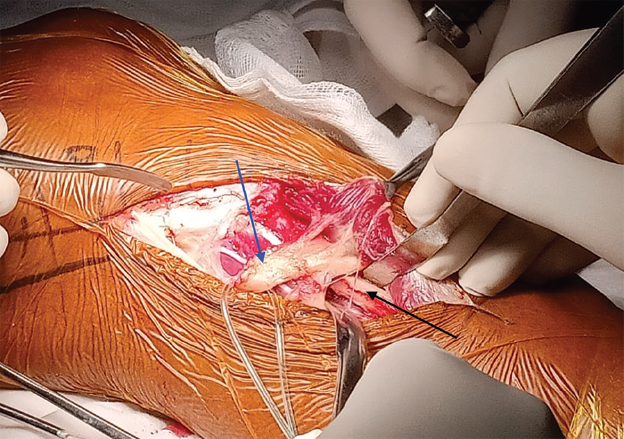
- Intra-operative photograph demonstrating the common peroneal nerve (blue arrow) dissected free off the right proximal fibula (black arrow).

- Intra-operative image demonstrating dissection of expanded right proximal fibula (arrow) and excision of proximal fibula around 6 cm of length with normal tumour-free margin.
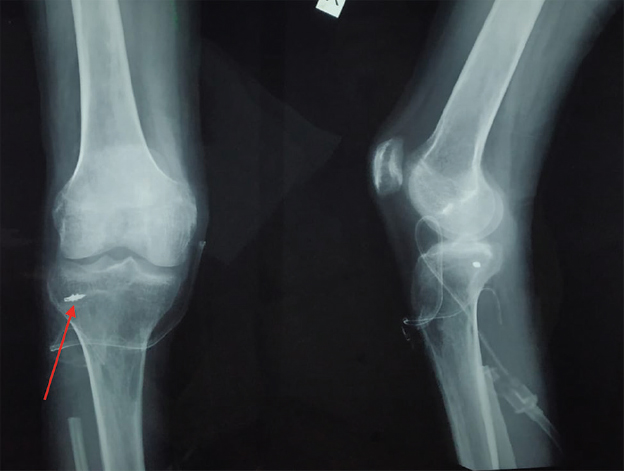
- Post-operative radiograph with proximal fibula excision and reattachment of the lateral ligament complex by suture anchor (arrow).
PMTs are rare tumours which are frequently associated with tumour-induced osteomalacia that manifests as renal phosphate wasting. It should be kept as a differential diagnosis in mind when treating patients with severe osteomalacia and pathological fractures (Fig. 1) because isolated calcium and vitamin D supplementation is inadequate to treat this uncommon condition and renal phosphate wasting promptly resolves upon removal of the tumour.
Conflicts of Interest: None.





